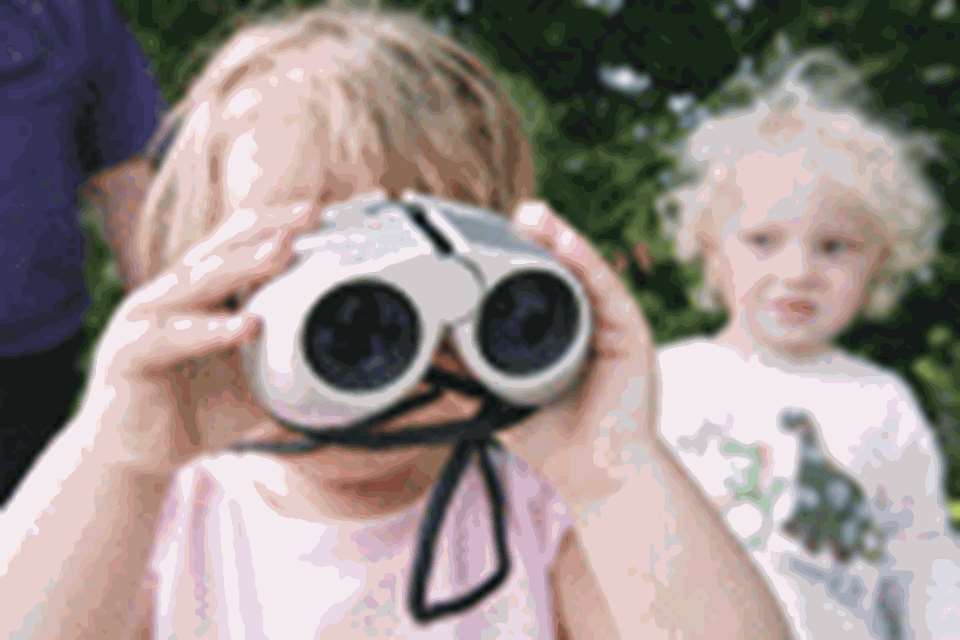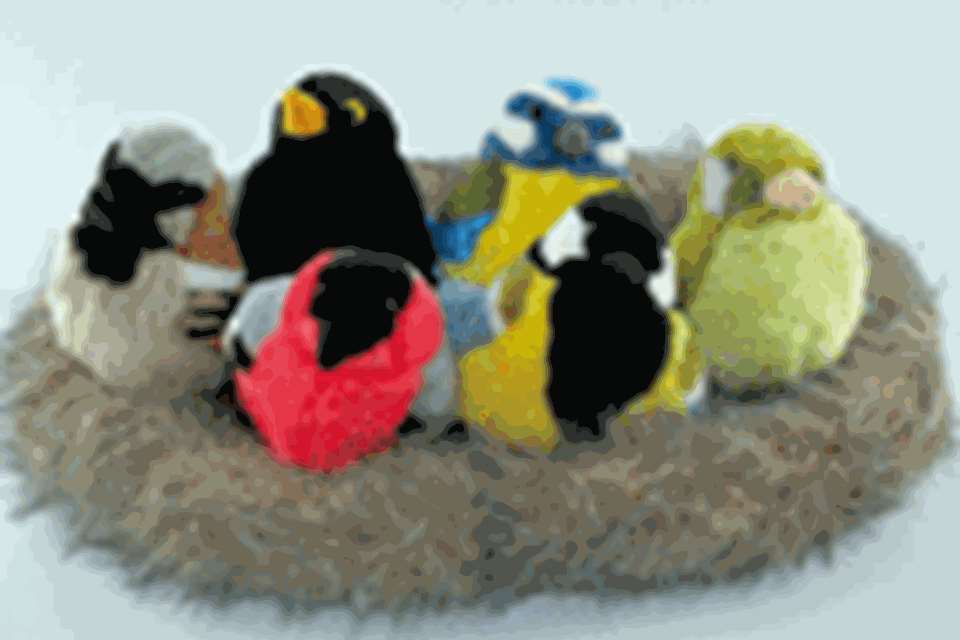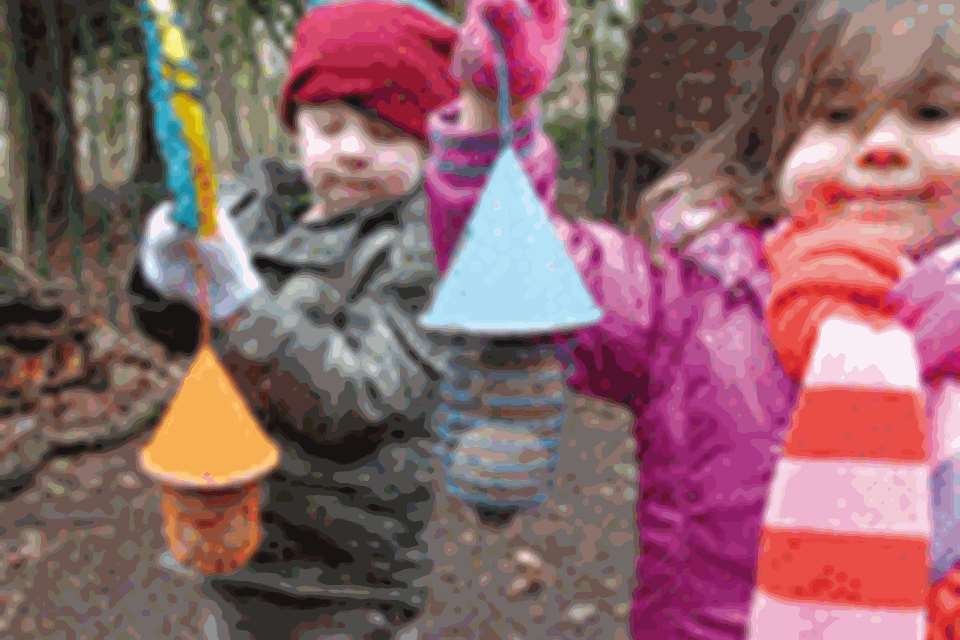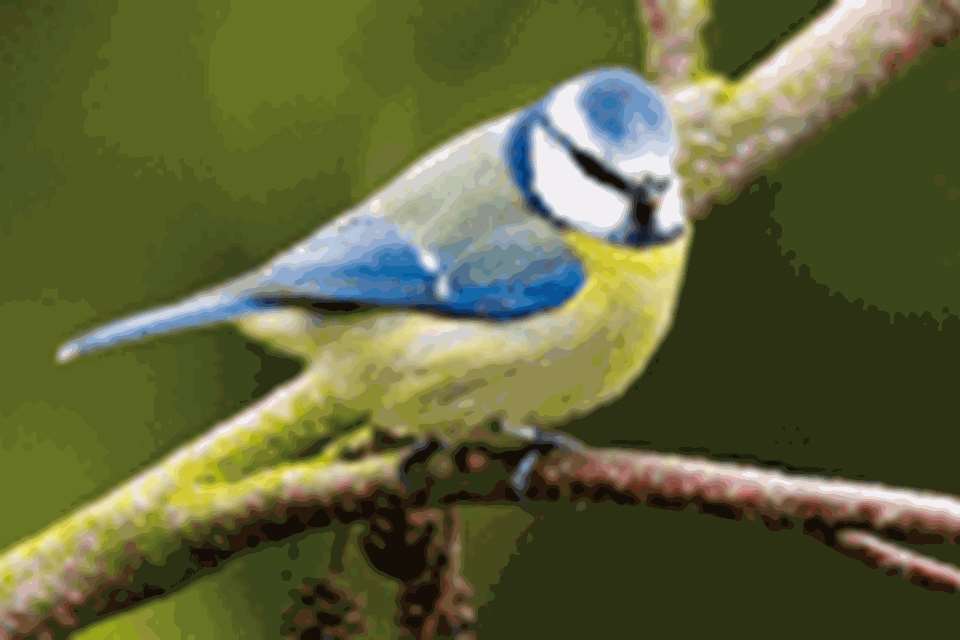Learning & Development: Bird Watching - Wing it!
Marianne Sargent
Monday, December 1, 2014
Following children's interests sparked a project to build an eco-friendly bird hide at a setting in Liverpool. Marianne Sargent explains.

Children at Everton Nursery School and Family Centre in Liverpool took on the roles of architects and construction workers to build their own eco-friendly bird hide in conjunction with Liverpool John Moores University as part of a broader study into early years education.
Everton deputy head Jamie Wilson says the four-week project stemmed from the children's interest and concern about environmental issues.
'As keen environmentalists and being very aware of sustainable issues through our environmental programme - as we are an Eco-Schools Ambassador - the children opted for their very own bird hide.'
 The children were fully involved throughout and helped to plan, design and build the hide. 'The project takes into account the Reggio Emilia approach to children's exploration and discovery. The children were consulted at the early planning phase and asked what outdoor structure they would like to develop,' Mr Wilson explains.
The children were fully involved throughout and helped to plan, design and build the hide. 'The project takes into account the Reggio Emilia approach to children's exploration and discovery. The children were consulted at the early planning phase and asked what outdoor structure they would like to develop,' Mr Wilson explains.
Initially, the children visited Martin Mere Wetland Centre in Lancashire, where they watched flamingos and harriers from inside hides and talked to local bird watchers. They took photographs of the materials used to build the hides and the resources inside.
'Back at nursery, they planned and designed their bird hide, using large wooden construction blocks and recycled materials such as bread and milk crates, and embarked on a little bird watching of their own with the aid of some binoculars and bird identification cards.
'Nursery staff then asked them to describe what they thought their real hide should look like and suggest ideas for the best building materials.
Once the children had submitted their plans to low-carbon building specialist Clan Products, the construction began. The hide was made of Aircrete blocks - a sustainable building block comprising 80 per cent recycled materials, using a thin joint system consisting of highly insulated block and a simple-to-lay mortar with a very short drying time.
These building materials were supplied free of charge by Clan Products, which visited the setting once a week to supervise and support the children throughout the build.
The children wore high-visibility jackets and used real hammers, saws, drills and trowels as they worked alongside the builders and local students to lay foundations and construct the walls. They were also involved in sanding down the walls, cutting out the windows, creating an entrance and finally laying the grass on the roof.
'This has been a fantastic project that the children have owned and developed themselves from the outset,' says Mr Wilson. 'It has seen the children's thoughts, designs and ideas come to life. There were a range of cross-curricular learning experiences, which the children benefited from and will have a long-term impact on their knowledge and understanding of the world that surrounds them.
'The children have been responsible for each stage of the process and, with a little help from our partners, have created a wonderful legacy for everyone to use.'
The hide is now in regular use. Everton Nursery School teacher Faye O'Connor explains, 'We invited children and families to a special launch event in which the bird hide had its grand opening, with a red ribbon cut by the children. The children and families explored the hide together and it now remains a popular and permanent fixture in our outdoor learning environment. Inside the hide, the children use binoculars and bird identification sheets to explore the local wildlife.'
The project is also now embedded into one of the Liverpool John Moores University Early Childhood Studies degree programmes. Senior lecturer Nicky Hirst says, 'It is important that the students see how young children can relate to and engage with environmental issues from a very young age and how it is possible to really listen to their voices in a reciprocal and respectful way, as this is the bedrock of excellent early years provision.'
The centre is now planning another project with Liverpool John Moores University and Clan Products.
Piece by piece
Hungry Caterpillar Day Nurseries in London is another setting that has been working on attracting birds to its outdoor areas. Managing director Timothy Hodgson explains how
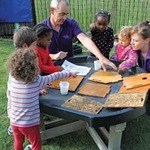 About a month ago, we built our first birdhouse at our nursery in the grounds of Hathaway Primary School, Hanwell, west London, and are in the process of rolling out the project to our other eight nurseries.
About a month ago, we built our first birdhouse at our nursery in the grounds of Hathaway Primary School, Hanwell, west London, and are in the process of rolling out the project to our other eight nurseries.
The idea for the project came from our maintenance man Luis Colaco, who has a real interest in nature.
He was keen for the project to go ahead now so that the boxes could provide shelter for birds and other creatures over the winter. Hanging them now would also give the birds plenty time to get used to the houses and, hopefully, use them for nesting boxes in the spring.
Both Luis and I were keen for the children to be part of the building process, so he prepared and cut the materials to create a set of numbered pieces that the children could then assemble, like a jigsaw, and glue at the joints.
Alongside, he created a step-by-step plan for the children to follow when building the boxes.
Ahead of building the houses, the staff took the children on a nature walk in the school grounds and created a bird and nature display board including pictures of the birds that the children had seen.
 They also had their photographs taken in front of a mural, which is on the side of some local shops and features birds. The children pointed out the various different types of bird, such as pink flamingoes.
They also had their photographs taken in front of a mural, which is on the side of some local shops and features birds. The children pointed out the various different types of bird, such as pink flamingoes.
The project has given the children a good understanding of living creatures.
Staff encouraged the children to identify and learn about different types of birds, such as pigeons, magpies and robins, which the children observed and fed daily within the nursery's garden.
The children were curious about how the birds would fit into the hole in the bird's house, which prompted discussions about different kinds of birds, their similarities and differences.
Learning opportunities
PSED: Works as part of a group.
PSED: Works co-operatively.
PSED: Shows sensitivity to the needs of others.
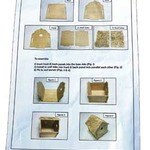 CL: Listens attentively.
CL: Listens attentively.
CL: Follows instructions.
PD: Shows good control and co-ordination in handling tools.
L: Knows print carries meaning.
M: Count reliably.
M: Talks about size and shape.
UW: Makes observations about animals.
UW: Explains why things occur.
UW: Uses tools for a purpose.
EAD: Thinks about media and materials.
ATTRACTING BIRDS TO YOUR SETTING
It may not be possible to build a permanent bird hide in every setting, but it is possible to make your outdoor area more bird friendly and attract birds by putting out some good-quality feed.
Set up a bird table to give the birds somewhere they will feel safe, out of the reach of small hands. To ensure they visit frequently, put food out at regular times in the day to help them become familiar with the routine.
During the cold winter months feed them twice a day, if possible, with high-fat foods. In warmer weather, birds will benefit from high-protein foods such as seeds, mealworms and grated cheese. Keep an eye on the feeding area and clean away leftovers before they spoil in the heat.
SEED MIX
Bird seed mix containing flaked maize, sunflower seeds, peanut granules, pinhead oatmeal and millet are ideal for attracting a range of species of bird.
The RSPB advises against using mixes that contain split peas, lentils, beans and dried rice because these attract larger birds that deter smaller species.
FOOD SAFETY
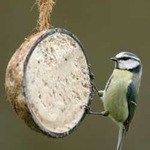 Peanuts These can contain high levels of aflatoxin, which is lethal to birds, so buy peanut feed from reputable dealers. Do not feed birds with salted or dry-roasted peanuts. And avoid offering peanuts in spring as they pose a danger to newborns.
Peanuts These can contain high levels of aflatoxin, which is lethal to birds, so buy peanut feed from reputable dealers. Do not feed birds with salted or dry-roasted peanuts. And avoid offering peanuts in spring as they pose a danger to newborns.
Fat balls Remove nylon mesh, as small birds can get entangled in it. Do not use cooking fat to make your own, as it contains too much salt and is a breeding ground for bad bacteria. The consistency can also lead to the fat becoming smeared on the birds' feathers - this is also the case with margarine and cooking oil. Use raw suet or lard instead. Avoid fat balls in summer because they quickly go off.
Mealworms Ensure these are fresh and alive. Dead or discoloured mealworms can cause food poisoning.
Cat and dog food Wet pet food is suitable, but dry pet food can cause choking.
Milk and dairy Birds are unable to digest milk and may die. They are able to eat grated cheese, however.
Coconut Providing coconut in the shell is fine, but avoid desiccated coconut, as it swells in birds' stomach.
Rice and cereals Any dry breakfast cereal is suitable. Cooked rice is fine, as are uncooked porridge oats, but cooked porridge oats are dangerous, as they can harden around birds' beaks.
Hygiene Use a bird table rather than putting food on the ground to avoid attracting rats. Keep bird tables clean and free from droppings, and rinse out water containers daily to avoid the spread of disease. Do not put out stale and mouldy food because it can cause serious illness in birds.
MORE INFORMATION
- For further advice, visit www.rspb.org.uk/makeahomeforwildlife/advice/helpingbirds/feeding/ index.aspx
- For bird feed, such as the coconut shell treats, visit http://shopping.rspb.org.uk
BOOKS AND RESOURCES
Books
- RSPB First Book of Garden Birds by Mike Unwin, Sarah Whittley and Rachel Lockwood - an interactive book that teaches children how to identify birds.
- Little Book of Birds by Sarah Khan - children's information book with web links.
- The Odd Egg by Emily Gravett - Duck finds an egg and is determined to look after it.
- The Owl Who Was Afraid of the Dark, The Penguin Who Wanted to Find Out and The Hen Who Wouldn't Give Up by Jill Tomlinson and Paul Howard - three new editions of these classic stories featuring birds.
- The Very Worried Sparrow by Meryl Doney and Gaby Hansen - one little sparrow worries about everything.
- Magpie's Treasure by Kate Slater - beautifully illustrated book about a magpie who learns all that glitters is not gold.
- It's Quacking Time by Martin Waddell and Jill Barton - when Mommy Duck lays an egg, Duckling is surprised to learn that there's a baby duck inside.
- Owl Babies by Martin Waddell and Patrick Benson - three baby owls wake up one night in their hole in a tree to find that their mother has gone.
Resources
- Bird wind chime, Swanee whistle, bird ocarina and owl/cuckoo two-tone whistle (www.soundchildren.co.uk)
- Wild bird study pack (www.playforceshop.com)
- Camouflage netting (www.cosydirect.com)
- Owl Babies Talk and Play Story Pack and wooden character set (www.yellow-door.net)
- Children's binoculars (http://shopping.rspb.org.uk)
- Motion-activated bird cam, bird box with camera (www.tts-group.co.uk)
- Bird puppets in various sizes (www.puppetsbypost.com)
THE BIG GARDEN BIRDWATCH
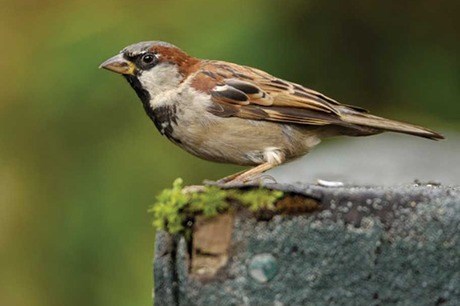
The next Big Garden Birdwatch is taking place on the weekend of 24 and 25 January 2015.
This annual event has been taking place for more than 30 years and has resulted in the world's biggest wildlife survey helping scientists to discover which are the UK top ten most common garden birds.
Originally aimed at people in their own homes, the event now includes The Big Schools' Birdwatch, which next year runs from 5 January to 13 February. The RSPB has designed resources for the under-fives, as well as older children, enabling settings to make the project as simple or as in-depth as they wish.
The actual birdwatch takes just one hour and every school or group that submits its results before 20 February will receive a certificate and personalised minibeast poster as a thank you for participating.
In 2014, the RSPB asked participants of the Big Garden Birdwatch to look out for other wildlife as well to help build a better picture of the various animal species that frequent our gardens. This will be part of the survey again this year and so participants are asked to look out for animals including badgers, squirrels and slow worms.
Make a role-play bird hide
Why not make a bird hide for the Big Garden Birdwatch? Acquire a very large cardboard box that a child can comfortably stand in when upended. Turn the box on its side and use a sharp knife to cut some viewing holes into the bottom. Drape a piece of camouflage netting over the box so that it covers the viewing holes and hangs down to create a curtained entrance at the back.
Place some reference books, a bird recognition chart and some binoculars inside. Provide clipboards and pencils with tally charts featuring pictures of common garden birds for the children to keep a record of the birds they spot.
- To register and for more information about the Big Garden Birdwatch, visit www.rspb.org.uk/discoverandenjoynature/discoverandlearn/birdwatch.


